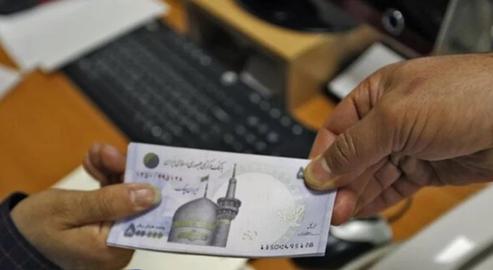“A loan of 150 million tomans (US$6,000) for the birth of a third child”: this was the news that issued from the Iranian parliament on Wednesday, February 24. Iran has seen declining levels of population growth for some years now, and its leaders have been looking for ways to incentivize a childbearing movement.
The new parliamentary resolution asks the Central Bank to set aside 900 billion tomans (US$36 million) of credit to pay interest-free purchase loans or rent deposits of 150 million tomans to parents who have a third child by 2022.
On doing the math, it appears that this amount will at best cover 6,000 families. In other words, if this scheme works, members of the 11th Parliament will have succeeded in adding 6,000 births to the country's official statistics by the end of 2022. This figure would be a derisory 0.26 percent of the natural birth rate, which occurs without any financial incentive.
The latest report of the Statistical Center of Iran stated that between March 2020 and March 2021 some 580,000 births were registered in the country. If the current trend continues until the end of 2022, there will be no more than 2.3 million births in total by 2022. Another 6,000 births represent fewer than three per thousand, which would have happened anyway.
What Percentage of Iranian Households Can Hope for This Loan?
Census data from the Statistical Center in 2020 indicates that fewer than 28 percent of the country's households currently only have four members. This suggests that in the best case, around a quarter of all families with two children have a prayer of receiving a loan of 150 million tomans by ushering in a third. But is having another child in exchange for a 150 million-toman loan even a financially sound decision?
How Much Does It Cost to Turn a Family of Four into Five?
The Statistical Center’s latest household expenditure and income report for 2020 finds that in urban areas of Iran, the total food expenses of families of five are close to four percent higher than those of families of four. On the other hand, non-food costs are almost constant, and even slightly reduced. The average income of families of four and five is almost equal, with a difference between them in 2020 of fewer than 400,000 tomans (US$16).
The addition of a child to a family of four means each family member is likely to have less to eat and fewer material goods. How far a 150 million-toman loan would compensate for this shortcoming is the next matter that must be explored.
What is the Value of this Loan to Families?
150 million tomans is a considerable amount of money in relation to average household income. According to the latest expenditure and income figures, the average income of a four-person urban household in 2020 was about 57 million tomans (US$2,270) per year, or in other words, 4.7 million tomans (US$190) per month.
If we consider inflation for this year and next year as standing at around 30 percent, and imagine that household income increases accordingly, the average income of an urban household next year would be somewhere around 96 million tomans (US$3,820): about 8 million tomans (US$320) per month. 150 million tomans would be more than one and a half times the average annual income of a family of four next year. This sum, however, is not a gratuity or reward, but a loan that must be repaid in monthly instalments. And these monthly instalments will in turn increase household expenses.
Will the Loan Increase the Birth Rate?
Parliamentarians might assume that a loan of 150 million tomans will tempt families to have a third child. But it seems unlikely that anyone will take the risk just for this loan.
Firstly, the loan is not available to everyone. The number of households that may be eligible is not large enough to change the pattern of population growth.
Secondly, the risks involved with having another child are very high in the current unstable economic, social and political climate. Many Iranians have already learned, through first-hand and passive experience, that having more children equates to a harder life in present-day Iran.
Thirdly, this is not the first time that incentive packages for childbearing have been offered in Iran. Ten years ago, President Mahmoud Ahmadinejad offered a one-million-toman “reward” for the birth of each new child: a figure of about US$1,000 at the time. The “reward” was offered to all families, not just those welcoming a third child, and did not need to be repaid.
Probably for the same reason that Ahmadinejad's reward scheme did not work, the 150 million-toman loan from the 11th Revolutionary Parliament has no chance of reversing the decline in the population growth rate: itself the natural consequence of far deeper economic, social, political and even environmental problems that cannot be resolved with cash handouts alone.
Related coverage:
More Than 600,000 Women Have Illegal Abortions in Iran Every Year
Special Report: Khamenei’s Delusional Population Growth Policy Endangers Iran’s Future
visit the accountability section
In this section of Iran Wire, you can contact the officials and launch your campaign for various problems


























comments